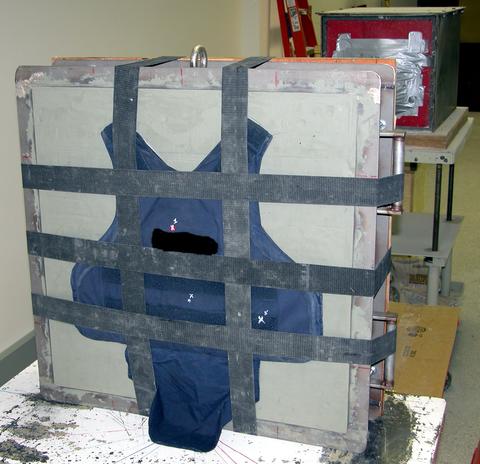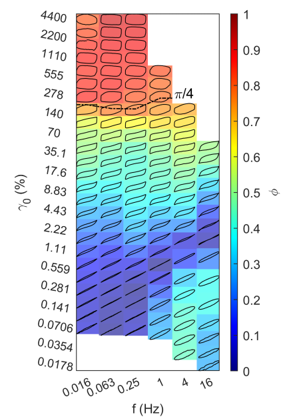Materials and Systems for Protection Against Penetrating and Blunt Force Phenomena
Summary
Penetrating and blunt force phenomena can cause serious trauma. The STG performs research to advance materials science and metrology for materials and equipment intended to prevent traumatic injuries. This work includes the establishment of novel metrologies and test methods, and the promulgation of documentary standards through leadership in standardization bodies. Current research projects focus on the development of methods for characterizing impact-mitigating materials, and the development of methods and metrology for characterizing the performance of body armor and materials used in body armor testing.
Description
Injury risks can be reduced by ensuring that protective equipment is well suited for the operational environment. Often, achievement of this goal relies on research to understand the operational environment, the underlying physics that govern the response of materials and equipment, and the limitations of test methodologies used to characterize the equipment or materials used in the equipment. Insights developed from this research then inform standards development activities, leading to improved metrologies for impact protection equipment.
Impact mitigating materials research aims to develop improved test methods for assessing the ability of materials to protect against sporting and similar moderate rate impacts. The outcomes from this research will support improvements in impact protection equipment used in a wide array of applications, including sports helmets, civil disturbance unit helmets and protective equipment, protective padding and systems used in sports, and impact resistant protective equipment used in industrial settings.
An important application of impact-mitigating materials is to improve head protection technologies in athletic equipment. A recent initiative, The Head Health Challenge III , was a joint effort of NIST, the National Football League, Under Armour, and GE to advance the state-of-the-art in advanced materials for impact mitigation, particularly when used in protective helmets.
Body armor research activities related to materials used in body armor and materials used for testing body armor are aimed at improving test metrologies and understanding long-term performance. The outcomes from this research inform numerous standards development activities and provide a foundation for improvements to the relevant materials and systems.

One current effort is focused on improving understanding of the current material used to assess the blunt trauma resistance of body armor, and developing the measurement methods that will be used to assess proposed replacement materials. We have developed a lab-scale rheological framework to facilitate standardization of the formulations, and quality control evaluation of the candidate backing materials developed by ARL. We have addressed measurement challenges in quantifying the effects of strain, strain rate, and temperature on the mechanical properties of the candidate ballistic witness materials. Our research also provide valuable information on the structure-property relationships for those materials in terms of temperature sensitivity and thixotropy. This research is highlighted in Assessing the Next-Generation Backing Materials for Body Armor Testing.

Our current research focuses on the characterization of the thermophysical properties of the ballistic witness materials, specifically, the effect of water content on those properties. Comprehensive material data are needed prior to future implementation of the candidate materials into ballistic testing operations. Our work in this area will continue to help guide the formulation development, set quality control guidelines, and establish documentary standards for ballistic witness materials.
Related NIST Projects
Assessing the Next-Generation Backing Materials for Body Armor Testing
Publications
Rheology of ballistic clay: the effect of temperature and shear history (SPE ANTEC® 2017)
Characterization of clay composite ballistic witness materials (Journal of Materials Science 2015)

